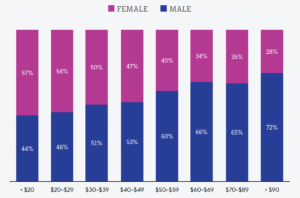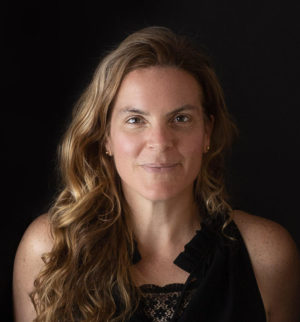By Andrea Smalling and Cathy Huyghe
This year, WineDirect and Enolytics partnered to create their ground-breaking 2021 DTC Impact Report, pairing WineDirect’s robust consumer behavior and purchase-pattern raw data with Enolytics’ technology and expertise in processing and analyzing complex Direct to Consumer (DTC) data.
A primary goal of the report is to move data from “raw numbers” to meaningful information, so the teams worked together to turn the insights found in the report into actions that wineries can implement now to build their DTC business. The full report is available for download here, but the following are some of the findings we found personally very interesting and valuable.
The newest consumers
While boomers remain the biggest spenders on wine, millennials and Gen X are growing quickly, combining for about 55 percent of net sales in 2021. As younger generations continue to increase as a percentage of wine sales, women are overrepresented in the youngest wine-drinking generations, Gen Z and millennials, and are nearly equal in Gen X. Women overall increased their percentage of DTC cases sold from 40 percent in 2017 to 44 percent in 2021.
![Cases Sold by Generation [2017 vs 2021] (courtesy WineDirect & Enolytics)](https://wineindustryadvisor.com/wp-content/uploads/2022/04/Cases-Sold-by-Generation-2017-vs-2021-WineDirect-x-Enolytics-300x192.png)
Clearly, wineries looking to grow in the near future would benefit from engaging with these important consumers. Here are a few ways to successfully drive growth among women and younger consumers.
Meet them where they are
Gen Z, for example, skews high in net sales onsite and at winery events, with more than half of Gen Z net sales coming from these channels. Anecdotally, we know younger consumers often gravitate to experiences and opportunities where they feel part of a community and are able to fully engage with products. This, combined with the trial opportunities provided, suggests onsite at tasting rooms is the ideal channel to begin a relationship with these important younger consumers.
It’s important for wineries to create experiences that will establish strong relationships with this demographic. Some suggestions for doing exactly that include:
- Develop and tell your authentic brand story.
- Offer opportunities for consumers to engage with the winemakers and viticulturists who are responsible for making your wines, including hands-on educational experiences, not designed to make newer consumers feel intimidated, but to help them to learn about all aspects of wine enjoyment.
- Build a community around your wines and give consumers the chance to engage with other fans.
- Since not every consumer lives near your winery, try to recreate in-person experiences as much as possible. Develop events that help them feel like they’re with you and are part of your winery family, such as virtual tastings with winemakers or viticulturists. Post and share images that show what’s happening at the winery. (Candid images are great — even better than posed, professional shots.)
- Remember that younger generations of wine consumers are becoming increasingly diverse and expect to see this diversity reflected in the brands they support. Being aware of this, in terms of your communications and onsite experiences, is paramount to successfully engaging with these consumers.
Offer what they want
Women consume a wide range of varietals but tend to skew higher for white wines and rosé wines. On average, they also spend less per bottle than men. Ensure you have some approachable options available for trial as a first step to attracting these consumers. Don’t be afraid to break with tradition and offer things such wine-based cocktails or fun recipes made with wine.

Gen Z has a significantly lower percentage of net sales coming from the wine club channel when compared with all other generations. Whether it’s onsite in your tasting room or online through the website, don’t push them too hard initially for case purchases or to commit to membership. Focus instead on smaller offerings, such as two- or three-bottle bundles. Always capture their contact information so you can continue to engage with them. This is the first step in their journey with your winery. Over time, as they enjoy your wines, they can be guided toward more expensive channels and wines.
Data in the 2021 Direct-To-Consumer Impact Report points toward engaging women and younger consumers as even stronger growth drivers for winery DTC. With creativity and imaginative strategies to involve them in your winery’s story, you can take the next steps to turn that data into actionable information that benefits the future of your business.
____________________________________________________
Andrea Smalling and Cathy Huyge


Andrea Smalling is chief marketing officer at WineDirect (www.winedirect.com), and Cathy Huyghe is CEO of Enolytics (www.enolytics.com). The 2021 Direct-To-Consumer Impact Report: What Wineries Need to Do Now report analyzed 200 million transaction records and paired anonymized data from WineDirect clients with Enolytics’ analysis technology.

















